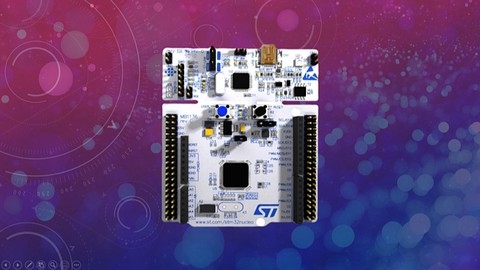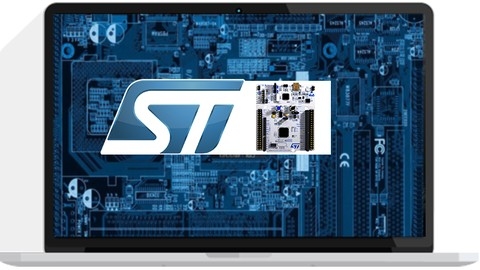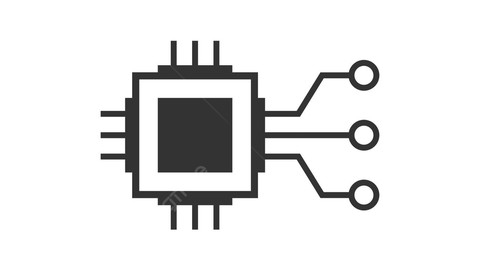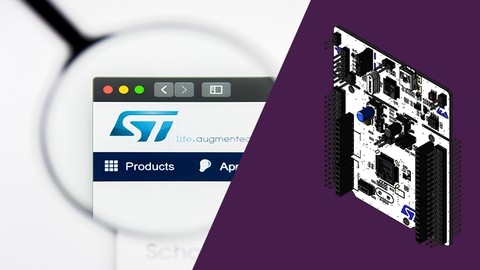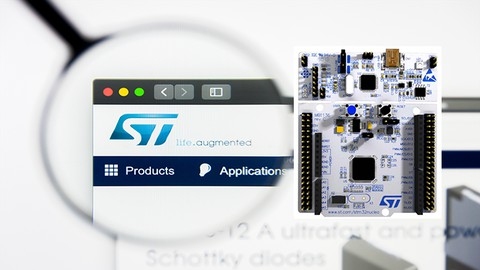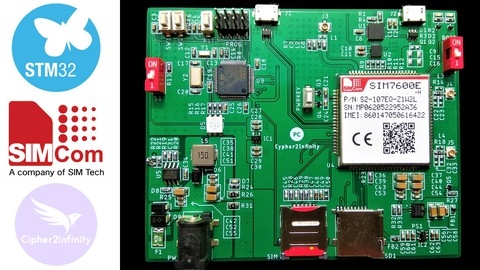STM32 microcontrollers are powerful and versatile chips used in a wide range of embedded systems, from simple IoT devices to complex industrial control systems.
Mastering STM32 programming opens doors to a world of exciting projects and career opportunities.
You’re looking for a comprehensive and engaging STM32 course that equips you with the skills to design, build, and deploy your own embedded systems.
Finding the right course on Udemy can feel overwhelming, with so many options available.
For the best STM32 course overall on Udemy, we recommend Mastering Microcontroller: Timers, PWM, CAN, Low Power(MCU2).
This course stands out for its comprehensive coverage of essential STM32 topics, from timer configuration and PWM control to advanced communication protocols like CAN bus and low-power techniques.
The instructor provides clear explanations and hands-on exercises, making learning both effective and enjoyable.
While this is our top pick, there are other great STM32 courses on Udemy.
Keep reading to discover more options tailored to different learning styles, levels, and specific areas of STM32 programming.
Mastering Microcontroller: Timers, PWM, CAN, Low Power(MCU2)
You’ll start with a solid grounding in the fundamentals, exploring the different clock sources available and mastering the art of configuring the SYSCLK using the RCC peripheral.
The course expertly guides you through the process of project creation and import using CubeMX, a powerful tool for STM32 development.
As you progress, you’ll dive into a series of advanced topics that are essential for any embedded developer.
You’ll explore the versatility of timers, learning how to configure them for various tasks, including scheduling events, generating precise delays, and implementing input capture and output compare functionalities.
The course includes hands-on exercises that solidify your understanding of PWM, a powerful technique for controlling the brightness of LEDs and other actuators.
The course doesn’t shy away from complex topics like CAN bus communication.
You’ll gain a thorough understanding of this critical protocol, learning its message format, how to configure the bxCAN module, and how to send and receive data effectively.
The course even delves into the intricacies of acceptance filtering, allowing you to selectively receive specific CAN messages.
But this course goes beyond the core functionalities, guiding you toward efficient power management techniques.
You’ll explore the various low power modes available on STM32 microcontrollers, gaining insights into how to implement SLEEPONEXIT, WFI, and WFE instructions to minimize power consumption.
You’ll also learn about the STM32’s BACKUP SRAM and how to effectively utilize it for data preservation during power failures.
Finally, the course delves into the world of Real-Time Clocks (RTC), a vital component for embedded systems requiring precise timekeeping.
You’ll learn how to program the RTC to maintain accurate time and date even when the microcontroller is in low power mode.
The course covers how to implement alarms and interrupts using the RTC, demonstrating its importance for a wide range of applications.
This comprehensive course is a valuable resource for anyone seeking to master the intricacies of STM32 microcontrollers.
It provides a clear path to acquiring the skills you need to confidently design and build complex and power-efficient embedded systems.
Embedded Systems Bare-Metal Programming Ground Up™ (STM32)
You’ll begin by mastering the fundamentals – configuring peripherals like GPIO pins and UART directly through register values.
This involves delving into documentation, setting up your development environment (Keil uVision 5 and STM32CubeIDE), and writing C code to control these hardware components.
Building upon this foundation, you’ll explore core concepts like GPIO, UART, and the System Tick timer.
You’ll create drivers – essentially mini-programs – that provide convenient access to these peripherals.
For instance, you’ll write a UART driver to send and receive data over a serial connection, just like you would on your computer.
The course then takes you deeper into advanced topics such as interrupts, Direct Memory Access (DMA), and Analog to Digital Conversion (ADC).
You’ll learn how to craft interrupt handlers, which are functions that trigger when specific events occur – a button press or incoming serial data, for example.
You’ll also gain a firm grasp of how DMA can transfer data directly between memory and peripherals, bypassing the CPU for faster and more efficient data handling.
Next, you’ll delve into more sophisticated peripheral interactions, exploring the I2C and SPI communication protocols.
These are vital for communicating with external devices like sensors and displays.
You’ll use I2C to interact with the ADXL345 accelerometer to capture motion data and SPI to control the ST7735 graphics LCD for displaying information on the screen.
Throughout the course, you’ll gain a thorough understanding of the ARM architecture, the foundation of STM32 microcontrollers.
You’ll become familiar with its core components, including registers, instructions, and data flow.
Foundation of Embedded Systems with ARM Cortex and STM32
You’ll start with the fundamentals, learning about the different Cortex-M families, their core architecture, and the key differences between ARM and Thumb instructions.
The course uses the Nucleo F303RE board throughout, providing hands-on experience from the start.
You’ll then dive deep into the programmer’s model, exploring the various registers that control the microcontroller’s operation.
Lab sessions help solidify your understanding of general registers, special registers, xPSR, and the control register.
This foundational knowledge is crucial for writing efficient and reliable code.
The course continues by exploring the exception model, vector table, and the VTOR (Vector Table Offset Register).
You’ll learn how to handle exceptions, create your own vector tables, and even move them to SRAM – valuable skills for building robust embedded systems.
Moving beyond the core architecture, you’ll explore the peripherals of the STM32F3x microcontroller, including timers, ADC, DAC, GPIO, and more.
This practical section lets you build real-world projects, such as UART, I2C, and GPIO drivers.
You’ll also learn how to set up your development environment on Windows, Mac, or Linux, and get hands-on experience with the HAL (Hardware Abstraction Layer) generated by STCubeMX.
For those looking for a more advanced development environment, the course includes an optional section on setting up Eclipse on a Linux virtual machine.
This section guides you through the entire process, from setting up the virtual machine and installing Linux to configuring Eclipse and the toolchain.
You’ll then build a “blinky” project and learn how to use an open-source debugger.
This course provides a solid foundation in ARM Cortex-M programming, covering both theoretical concepts and practical applications.
It’s well-structured, with clear explanations and hands-on exercises that make learning engaging.
Mastering Microcontroller: STM32-LTDC, LCD-TFT, LVGL (MCU3)
Are you ready to dive into the world of embedded graphics systems?
You’ll learn the fundamentals of embedded graphics, from understanding RGB displays and pixel formats to mastering the art of controlling the hardware and programming the interface.
The course starts with hands-on experience using the STM32F429DISC, STM32F746-DISC, and STM32F407-DISC boards.
You’ll learn how to interface them with an external LCD using SPI and GPIO pins, gaining practical skills in hardware manipulation.
You’ll then delve into the intricacies of the LTDC (LCD-TFT Display Controller) peripheral, understanding its importance in achieving optimal performance.
The course guides you through setting up the main system clock and configuring the LTDC to create stunning visuals, even allowing you to experiment with different orientations like portrait and landscape modes.
But this course isn’t just about the basics.
You’ll explore the powerful LVGL library, a key tool for building graphical user interfaces (GUIs) in your projects.
You’ll learn to leverage LVGL’s simulator to create and test your designs before deploying them onto your STM32 board.
You’ll also dive into creating real-world applications, like an RGB mixer demo, where you can put your knowledge of LVGL objects and interface design into practice.
This course provides a solid foundation in embedded graphics, equipping you with the skills to create compelling visual experiences on your embedded systems.
Embedded Systems STM32 HAL APIs Driver Development
You’ll begin by setting up your development environment with STM32CubeIDE and exploring the standardized HAL libraries that simplify interaction with the microcontroller’s features.
The course then guides you through the creation of core drivers, including GPIO, UART, and timers.
You’ll learn to control LEDs, read button presses, send and receive data via serial lines, and implement precise timing mechanisms.
The curriculum delves into advanced topics like Analog-to-Digital Conversion (ADC), Direct Memory Access (DMA) for efficient data transfers, and interrupt programming for handling asynchronous events.
You’ll also learn to communicate with external sensors using the I2C protocol and master the use of the Real-Time Clock (RTC).
The structured approach, combined with practical examples, ensures you gain a solid foundation in STM32 programming.
However, remember that a strong grasp of embedded system fundamentals is recommended for maximizing the course’s value.
This course equips you with the knowledge and practical skills necessary to confidently embark on your STM32 projects, whether you’re developing custom hardware or integrating external components.
Embedded Systems STM32 Low-Layer APIs(LL) Driver Development
This course offers a comprehensive exploration of STM32 microcontroller development using the Low-Layer APIs (LL) driver approach.
You’ll gain hands-on experience building powerful embedded systems by mastering essential peripherals and techniques.
The curriculum starts by guiding you through setting up the STM32CubeIDE development environment, ensuring you have a solid foundation for your journey.
You’ll then dive into the core of embedded programming, learning to control GPIO pins, UART communication, and timers, which are fundamental building blocks for any embedded system.
Beyond the basics, you’ll delve into more advanced topics like analog-to-digital conversion (ADC) and DMA (Direct Memory Access), techniques that optimize data handling for complex applications.
You’ll learn about the crucial role of interrupts in real-time systems and how they enable your microcontroller to respond dynamically to events.
The course also equips you with the knowledge to implement communication protocols like I2C and SPI, allowing you to connect and interact with a range of peripheral devices.
You’ll gain practical experience with real-time clock (RTC) programming, a vital aspect of embedded systems that keeps track of time and enables the creation of alarms and event-driven functionalities.
Finally, you’ll learn about watchdog timers (WWDG and IWDG), crucial for system stability by preventing your microcontroller from getting stuck in unintended states.
You’ll also gain an understanding of the PWR module, which allows you to implement power-saving strategies by putting your system into low-power modes.
Throughout the course, you’ll find practical examples and exercises that reinforce your learning and allow you to apply your knowledge immediately.
You’ll emerge with a solid understanding of how STM32 microcontrollers function and the skills to build your own innovative embedded systems projects.
STM32 : Internet Of Things with 4G LTE Modem - Hardware
You’ll learn to design and build a custom hardware system from the ground up, starting with the fundamentals of circuit design using Eagle software.
The course dives deep into the essential skill of soldering, empowering you to transform your designs into tangible realities.
Prepare to delve into the intricacies of power supply design, where you’ll explore the workings of SMPS (Switch-Mode Power Supply) circuits and learn to select the appropriate SMPS IC for your needs.
You’ll master the art of designing protection circuits, ensuring your power supply is robust and reliable.
This includes understanding Li-Ion battery charging and protection, as well as the use of LDOs (Low Dropout Regulators).
The course then shifts its focus to the heart of your device, the STM32 microcontroller.
You’ll gain a thorough understanding of STM32 architecture and learn how to choose the best microcontroller for your project.
You’ll be guided through the process of designing the hardware necessary to connect your microcontroller to other components, ensuring seamless integration.
The final section is dedicated to the 4G LTE modem, the crucial element for your IoT device’s connectivity.
You’ll master the art of soldering the modem, designing its power supply, and understanding the intricacies of its UART and USB interfaces.
You’ll also learn to handle the SIM card, SD card, and antenna interfaces, guaranteeing that your device can communicate effectively with the world.
Throughout this course, you’ll benefit from detailed explanations, clear diagrams, and step-by-step instructions, providing a solid foundation for building your own IoT device.
You’ll acquire valuable skills in circuit design, hardware development, soldering, and testing, equipping you to tackle real-world projects as a skilled hardware engineer.
Mastering STM32 microcontrollers
This course offers a comprehensive exploration of the STM32 microcontroller, diving deep into both fundamental and advanced concepts.
You’ll start by understanding the core principles of microcontrollers, including memory types and internal architecture, laying a solid foundation for what’s to come.
Moving beyond the basics, you’ll delve into the specifics of the STM32, mastering the use of GPIO pins through both CMSIS and HAL libraries.
The course provides a thorough exploration of peripheral programming, covering topics like timers, watchdogs, and analog-to-digital conversion, including the efficient use of DMA for data transfer.
As the course progresses, you’ll tackle more complex applications.
You’ll learn to interface with sensors using the I2C protocol, enabling you to build systems that interact with the real world.
You’ll master communication with other devices using USART, opening doors to diverse applications.
The course delves into the world of USB, guiding you through the creation of Human Interface Devices (HID).
You’ll also learn to manage external memory like SD cards using the FATFS file system, enabling data storage and retrieval.
The course then guides you into the world of networking, using the LWIP TCP/IP stack for communication with other devices.
The culmination of the course is a practical project that will allow you to build a human-machine interface (HMI) application.
You’ll work with a TouchGFX middleware and utilize an ILI9341 LCD and XPT2046 touchscreen to develop a user-friendly interface.
This course provides a rich learning experience, offering a strong foundation in STM32 microcontrollers and equipping you with the skills to build complex, real-world applications.
While the course focuses heavily on practical application, it would benefit from including a more in-depth discussion of the theoretical underpinnings of certain concepts.
This would enhance the overall understanding of the subject matter and provide a deeper context for the practical applications.
